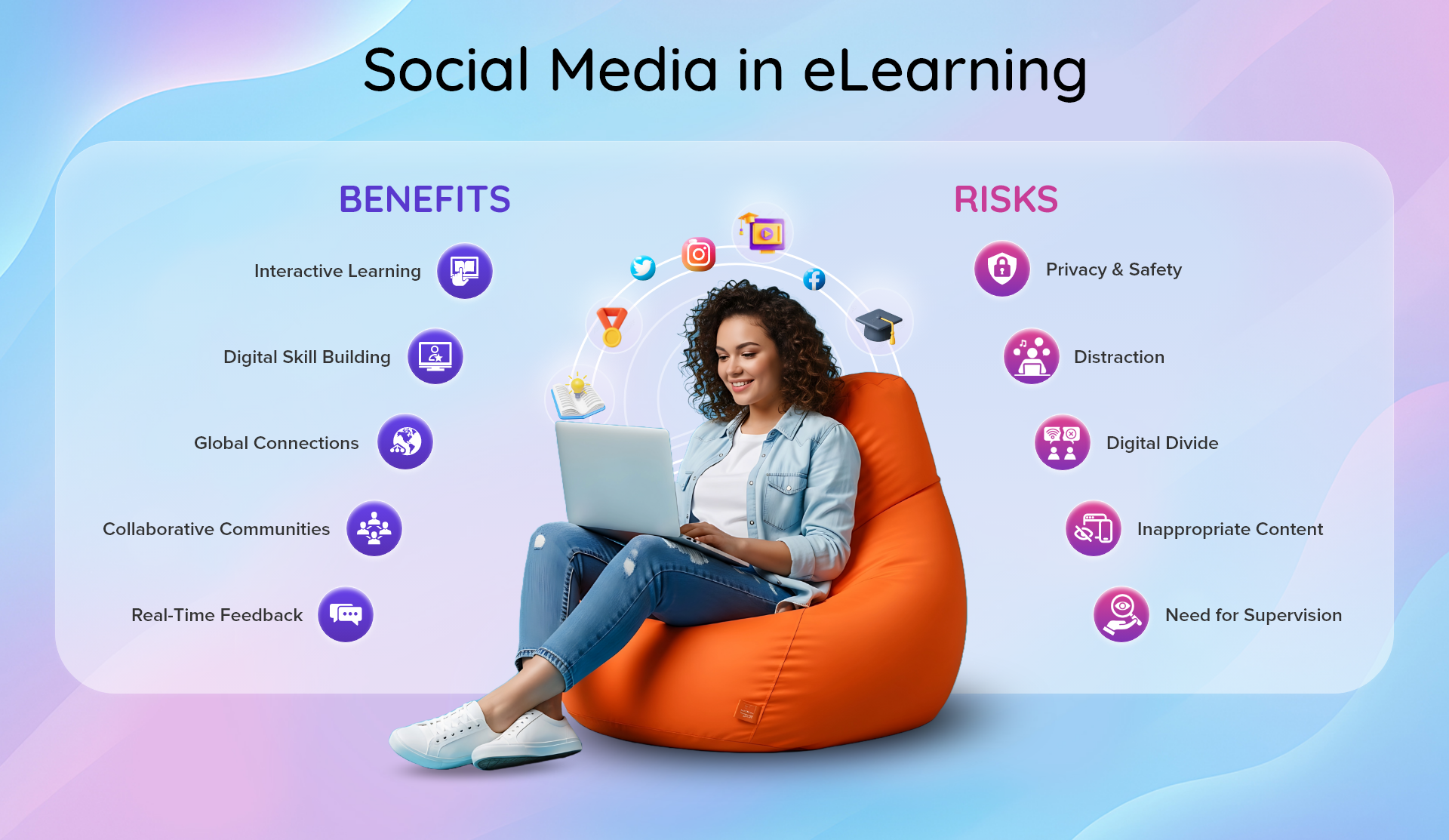Understand the benefits and risks of using social media in e-learning

Not long ago, social media was viewed as a distraction in the workplace. Today, it is becoming an important tool for professional development and corporate learning. From LinkedIn learning groups to microlearning on YouTube or collaborative project spaces on Slack and WhatsApp, social platforms are reshaping the way organizations deliver training and engage their employees.
Social media in eLearning offers exciting opportunities, but it also creates challenges that learning leaders must navigate with caution.
The bright side of social media in e-learning
Social media platforms offer unique ways to make e-learning more engaging and relevant for today’s learners. If used correctly, these tools can change the way learners interact with content.
1. Make learning engaging and interactive
Employees are already accustomed to using social platforms. Integrating them into training allows learners to collaborate, ask questions and share insights in real time. For example, a private LinkedIn group or Teams channel can host ongoing discussions, while YouTube-style micro-videos can transform complex policies into easy-to-understand, engaging lessons.
2. Develop basic digital skills
Modern careers require strong digital communication skills. By incorporating social media into eLearning, employees can learn how to create, share and interact with professional content, thereby improving technical fluency and digital etiquette, skills that go well beyond the scope of training modules.

3. Break down silos
Social media removes organizational and geographical barriers. Sales teams in Singapore can exchange strategies with colleagues in the United States, while remote workers can stay connected with a continuous learning community. This promotes collaboration, knowledge sharing and a greater sense of belonging.
Challenges we cannot ignore
1. Privacy and Security
When training conversations move to social platforms, sensitive company data or personal information can be exposed. Organizations must develop clear policies, provide a safe environment, and educate employees on compliance.
2. Interference factors
Social tools are a double-edged sword: While they support engagement, they can also divert attention. A hybrid approach that combines focused learning management system content with social discussions helps balance productivity and interaction.
3. Digital Divide in Organizations
Not every employee has equal access to reliable devices or high-speed internet. Ignoring this can create uneven learning opportunities and frustrate learners. Ensuring mobile-friendly and offline-enabled options is crucial.
4. Inappropriate or off-topic content
Just like in public platforms, enterprise social learning environments can be compromised by irrelevant or unprofessional posts. Effective audits and clear guidelines are critical to maintaining value.
Quick Reference: Benefits and Risks
| benefit | risk |
| Increase engagement with real-time collaboration | Raising privacy and compliance concerns |
| Develop digital communication and content sharing skills | Can cause disruption and reduce productivity |
| Connect distributed teams and facilitate knowledge exchange | Highlighting inequalities in access and connectivity |
| Encourage users to learn independently and support peers | May result in irrelevant or inappropriate contributions |
| Provide an ongoing discussion and feedback loop | Need for moderation and governance |
Find the right balance
In e-learning, the question is not whether to use social media; How to use it wisely. Clear governance, thoughtful integration and a focus on digital responsibility are key.
For organizations, the rewards are huge: When social media is aligned with training goals, it can transform static eLearning into a dynamic, collaborative, and ongoing learning experience. It transforms training from a one-time event into an ongoing conversation that not only helps employees learn, but helps them grow together.




